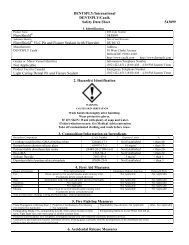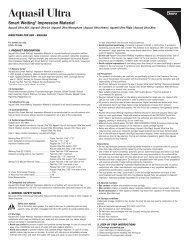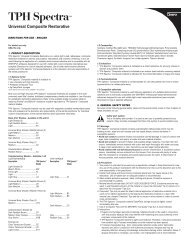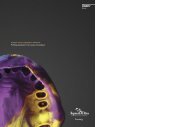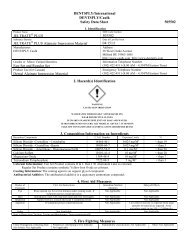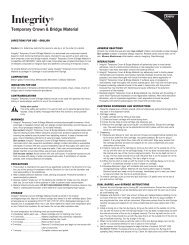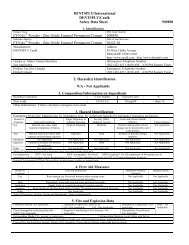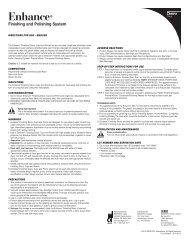Indirect and Direct Restorative Protocols - Caulk
Indirect and Direct Restorative Protocols - Caulk
Indirect and Direct Restorative Protocols - Caulk
Create successful ePaper yourself
Turn your PDF publications into a flip-book with our unique Google optimized e-Paper software.
››“Data transfer is critical to the fabrication of any restoration;<br />
use of a reliable impression material like Aquasil Ultra Smart<br />
Wetting allows development of models with precise<br />
margins devoid of undercuts <strong>and</strong> voids.”<br />
Nelson Rego, CDT<br />
Laboratory Technician <strong>and</strong> Owner, Rego Smiles, Santa Fe Springs, CA.<br />
Figure 5. A repeatable impression-making technique <strong>and</strong> Aquasil Ultra<br />
(DENTSPLY <strong>Caulk</strong>, Milford, DE) facilitate the fabrication of accurate<br />
restorations in the dental laboratory.<br />
Figure 6. Postoperative appearance demonstrates harmonious integration<br />
that was only possible due to precise data transfer <strong>and</strong> thorough<br />
communication with the laboratory.<br />
››Achieving Predictable Impression Capture<br />
■■<br />
■■<br />
■■<br />
■■<br />
■■<br />
Ensure proper tissue retraction <strong>and</strong> hemostasis.<br />
Properly dry the prepared tooth structures prior<br />
to impression capture (but do not desiccate).<br />
Apply B4 ® Pre-Impression Surface Optimizer to the<br />
prepared tooth, then air-thin, taking care not<br />
to rinse or dry the applied material.<br />
Fully load Aquasil Ultra Smart Wetting ® Impression<br />
Material prior to syringing Aquasil Ultra wash<br />
material around the final preparations.<br />
Begin expressing Aquasil Ultra wash material<br />
at the tissue margin <strong>and</strong> then cover the entire<br />
tooth surface.<br />
■■<br />
■■<br />
■■<br />
■■<br />
When coverage of the marginal area is complete,<br />
proceed coronally <strong>and</strong> circumferentially, keeping<br />
the syringe tip in the material as it is expressed.<br />
Align the First Bite ® impression tray parallel to the<br />
occlusal plane for proper vertical seating.<br />
Seat the impression tray using firm, steady pressure<br />
until Aquasil Ultra Smart Wetting ® Impression<br />
Material overflows from the tray within approximately<br />
1 minute from the beginning of syringing.<br />
Verify proper marginal detail prior to<br />
forwarding to the laboratory.<br />
adequate dimensional stability to withst<strong>and</strong> the subsequent<br />
transfer to the laboratory prior to model fabrication. This<br />
required dimensional stability, a defining characteristic of<br />
Aquasil Ultra, will also influence the technician’s ability to<br />
produce multiple refractory models following delayed pouring.<br />
Additional occlusal data can be sent to the laboratory in the<br />
form of a rigid bite registration (eg, Regisil® Rigid, DENTSPLY<br />
<strong>Caulk</strong>, Milford, DE) (Figure 4). To ensure that the occlusal<br />
data being sent is clearly communicated, excess material that<br />
extends onto the soft tissue region or to the height of the tooth<br />
contour should be removed using a scalpel blade or sharp scissors<br />
when seating the registration onto the model.<br />
Impression materials <strong>and</strong> techniques can vary depending<br />
on the type of restoration or clinical environment. Thus, it is<br />
beneficial that materials such as Aquasil Ultra <strong>and</strong> repeatable<br />
impression-making techniques enable dental professionals to<br />
deliver a well-integrated restoration for either the anterior or<br />
posterior region (Figures 5 <strong>and</strong> 6). n<br />
13



